Specialty Fibers
Definition: optical fibers with special designs or materials
More general term: optical fibers
More specific terms: fluoride fibers, phosphate fibers, active fibers, polarization-maintaining fibers, tapered fibers, photonic crystal fibers
German: Spezialfasern
Category:  fiber optics and waveguides
fiber optics and waveguides
Author: Dr. Rüdiger Paschotta
Cite the article using its DOI: https://doi.org/10.61835/5wc
Get citation code: Endnote (RIS) BibTex plain textHTML
Specialty optical fibers are usually understood as optical fibers which have at least one special property, distinguishing them from standard fibers. However, there is no universally accepted definition of the term standard fiber. One may regard a standard fiber as a simple step-index fiber, made with a standard material (in the case of glass fibers: silica) and with common values of parameters like the core size and numerical aperture. Specialty fibers can then belong to various groups:
- Some fibers use non-standard materials. For example, there are fluoride fibers which can transmit in longer (infrared) wavelength regions (→ mid-infrared fibers). Also, there are phosphate glass fibers, which can be more highly doped with laser-active rare earth ions. Some fibers are made from monocrystalline material; they are called single-crystal fibers. There are even liquid core fibers, offering wideband infrared transmission. Special materials may also be used for fiber coatings and jackets.
- Polyimide fibers are optical fibers which are coated with polyimide (but usually have a glass core and cladding). Such fibers can withstand much higher temperatures (roughly 300 °C) than fibers with the more common acrylate coatings.
- Solarization-resistant fibers are made from specially processed fused silica which is relatively resistant to ultraviolet light, avoiding excessive solarization.
- Radiation-resistant fibers are made from materials which are less affected by radiation, possibly also treated e.g. with hydrogen loading and pre-irradiation, and used for example in space applications and in nuclear facilities.
- Active fibers, being doped with laser-active ions (generally with rare earth ions), are often generally regarded as specialty fibers. Double-clad fibers, having an additional larger waveguide structure for pump light, and triple-clad fibers with one more cladding, are even more special.
- Some fibers exhibit extreme or specially tailored parameters, such as an unusually large fiber core diameter or a very high numerical aperture. Also, there are large mode area fibers, exhibiting particularly large fiber modes and correspondingly weak nonlinear effects. The opposite holds for highly nonlinear fibers. Dispersion-shifted fibers have tailored chromatic dispersion properties. In dispersion-decreasing fibers, the chromatic dispersion even varies over the length.
- There are spun fibers, where the fiber preform is rotated during the fiber drawing process. They can be used as telecom fibers with much reduced polarization mode dispersion, and also for polarimetric sensors where random birefringence is disturbing.
- Chirally-coupled-core fibers have a core which is surrounded by one or more satellite cores which are chirally wound around it. The satellite cores serve by damping higher-order modes of the central core.
- There are fibers where the waveguide function is not obtained simply with a somewhat increased refractive index in the core (→ step-index fibers), but in some other way. For example, there are photonic crystal fibers, containing air holes and therefore also being called holey fibers.
- Polarization-maintaining fibers of different designs can be used to maintain a linear polarization state over arbitrarily long propagation distances. Single-polarization fibers guide only light with a certain polarization direction.
- Spun fibers are drawn from a fiber preform which is rotated around its axis during the drawing process. They have special polarization-maintaining properties.
- Tapered fibers have been stretched to obtain a reduced fiber diameter, which usually changes along the length. They can be used, for example, for mode field adapters.
As there can be so different special properties, it is preferable to use a more specific term than specialty fibers, particularly in scientific publications.
More to Learn
Encyclopedia articles:
Suppliers
The RP Photonics Buyer's Guide contains 58 suppliers for specialty fibers. Among them:

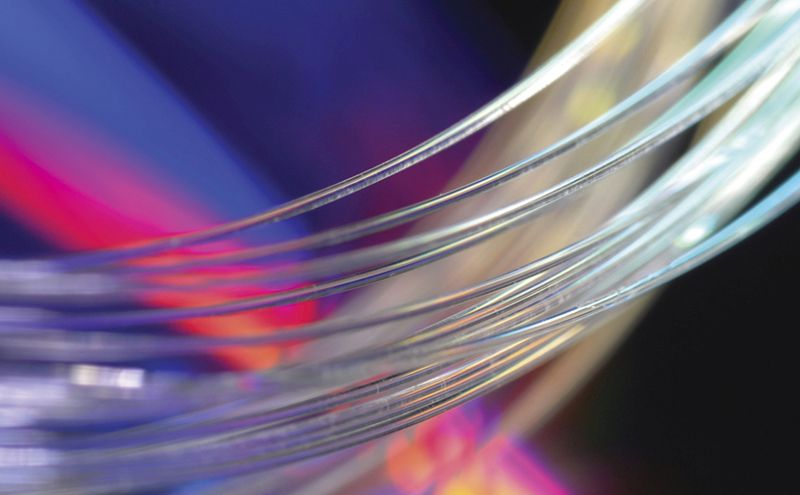
AMS Technologies
AMS Technologies carries a broad portfolio of specialty optical fibers, ranging from high-performance metalized fibers, coated with aluminium or gold to work reliably even at extreme temperatures and withstand harsh environmental conditions, to a wide range of doped optical fibers whose fiber cores are doped with laser-active ions, mostly of rare-earth materials, all the way to highly sophisticated photonic crystal fibers (PCF), used to create a supercontinuum based on quantum optical effects. Our suppliers have all the capabilities to design and fabricate a broad variety of specialty optical fiber structures according to customer orders – contact us to discuss your specialty fiber solution, custom made to cover your project’s requirements.

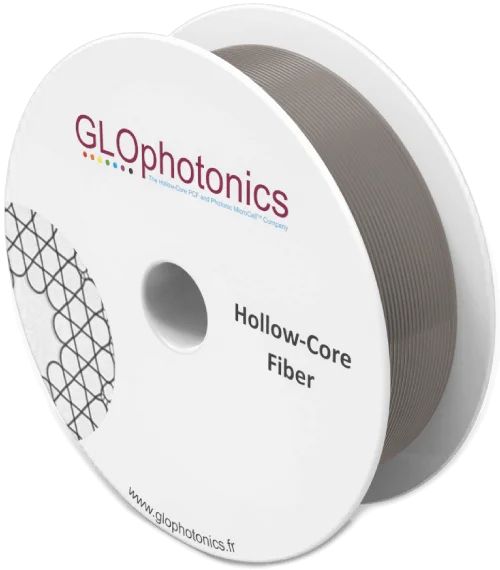
GLOphotonics
Explore the distinctive hollow-core photonic crystal fiber technology, guiding light within a hollow channel and enveloped by a microstructured cladding. A unique approach that redefines precision and efficiency in the field of photonics.
As a trailblazing industrial leader, GLO takes the forefront in photonics with a diverse array of hollow-core photonic crystal fiber solutions, tailored to meet the unique needs of our valued partners. Our commitment lies in delivering bespoke HCPCF innovations, setting new standards in the industry.

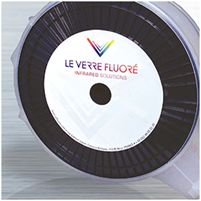
Le Verre Fluore
LVF offers the largest range of fluoride fibers in the world, including passive fibers and active fibers for applications ranging from the visible to the mid-infrared.
- ZrF4 (fluorozirconate) fibers transmit light from 0.3 µm up to 4.5 µm.
- InF3 (fluoroindate) fibers transmit light from 0.3 µm up to 5.5 µm.
- GeO2 (germanate) fibers are qualified for high power handling around 2.7–3.0 µm (Er:YAG and Er:YSSG medical lasers).
LVF fluoride fibers are the most transparent fibers on the market in the mid-infrared 2–5 µm band.

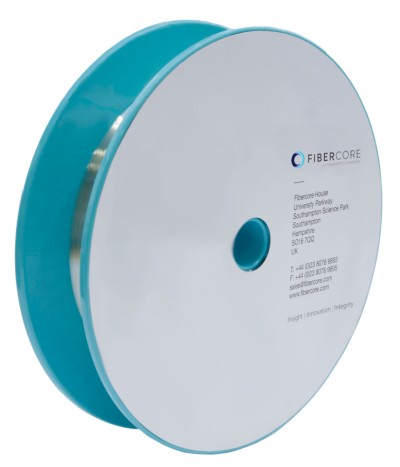
Fibercore
Fibercore has delivered over 40 years of innovation and excellence in developing and manufacturing speciality optical fiber. All of our fiber products have been developed with our customers in mind with market leading capabilities to produce an extensive range of fibers including;
- single-mode (SM) fiber
- doped fiber
- polarization-maintaining (PM) fiber
- multimode (MM) fiber
- multicore fiber
- spun HiBi fiber
We are continuously expanding our product ranges to cover wider and more demanding customer applications. So if you have a specific development project or require a custom fiber, we would like to discuss it further with you. We will work together with you to find the best solution.


Exail
Exail (formerly iXblue) offers a wide range of specialty optical fibers, either for lasers and amplifiers or for sensing applications. Hundreds of fiber designs are available from stock on our dedicated e-store. Custom versions are also available. Most of the references are also available in radiation resistant versions, either for nuclear environments or for space missions.
Questions and Comments from Users
Here you can submit questions and comments. As far as they get accepted by the author, they will appear above this paragraph together with the author’s answer. The author will decide on acceptance based on certain criteria. Essentially, the issue must be of sufficiently broad interest.
Please do not enter personal data here; we would otherwise delete it soon. (See also our privacy declaration.) If you wish to receive personal feedback or consultancy from the author, please contact him, e.g. via e-mail.
By submitting the information, you give your consent to the potential publication of your inputs on our website according to our rules. (If you later retract your consent, we will delete those inputs.) As your inputs are first reviewed by the author, they may be published with some delay.


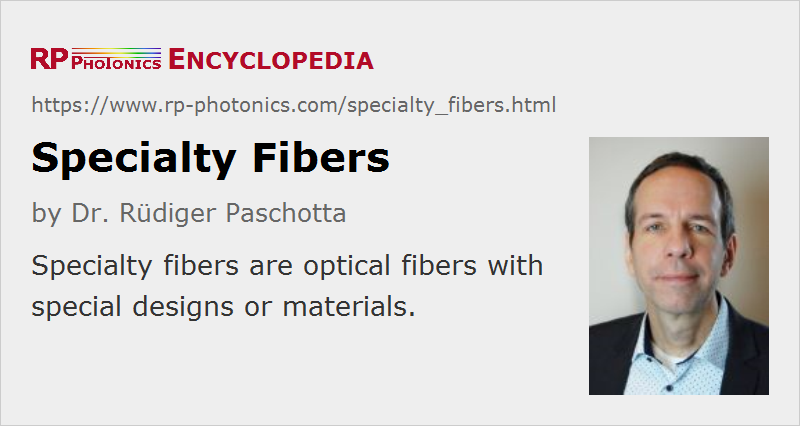
Connect and share this with your network:
Follow our specific LinkedIn pages for more insights and updates: